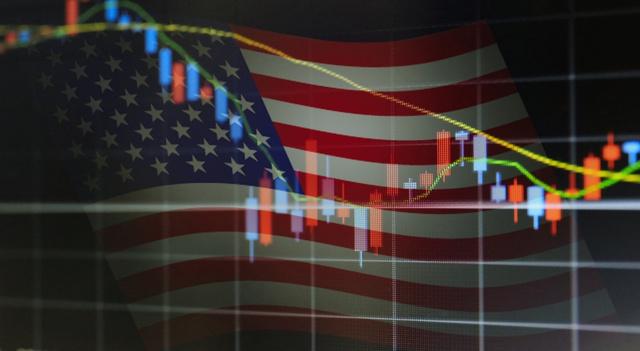AMD (NASDAQ: AMD)
What happened?
On Monday, Melius Research upgraded AMD to a Buy rating with a $175 price target.
Summary:
AMD is gaining momentum through strategic partnerships in the Middle East, while GPU sales are projected to grow significantly.
Details:
Melius highlighted AMD’s recent collaborations with Saudi Arabia’s HUMAIN and the UAE’s G42 as key growth drivers. HUMAIN plans a $10 billion investment targeting 6GW of data center capacity by 2034. G42 has already begun adopting AMD’s GPUs. These deals could allow AMD to grow its market share in the region faster than globally.
AMD’s MI355 chip is a standout, delivering a 35x improvement in low-latency inference. Melius raised its GPU sales projections to $6.6 billion in 2025 (up from $6.0 billion), then $9.7 billion in 2026, and $13.1 billion in 2027. A rebound in China could add $3 billion in annual revenue. If AMD captures just 5% of the accelerator market by 2028, earnings per share (EPS) could exceed $9. Melius sees AMD as well-positioned for long-term growth in AI and high-performance computing.
Lyft (NASDAQ: LYFT)
What happened?
On Tuesday, TD Cowen upgraded Lyft to a Buy rating with a $21 price target.
Summary:
Lyft is executing on strategic initiatives, expanding into new markets, and innovating its product offerings.
Details:
TD Cowen praised Lyft’s leadership for shifting to a “customer-obsessed” strategy. Innovations like Price Lock help retain riders, while better driver incentives are improving service levels. Growth in Tier 2 cities—like Charlotte and Indianapolis—has reached 30% year-over-year in Q1 2025, double the national pace.
The acquisition of FREENOW opens up a €1 billion opportunity in Europe, and Lyft’s Canadian business has shown strong triple-digit growth in 2024, slowing to a still-robust 50% YoY in Q1 2025.
Partnerships (e.g., with DoorDash) are boosting rider activity, and more are expected. Though Uber still dominates with a 70/30 market share split, TD Cowen believes Lyft can thrive without having to take market share, as the rideshare industry is projected to grow at a 10% CAGR from 2025 to 2030.
Duke Energy (NYSE: DUK)
What happened?
On Wednesday, Goldman Sachs upgraded Duke Energy to a Buy rating with a $132 price target.
Summary:
Goldman sees Duke as well-positioned for growth, supported by strong capex plans and regulatory backing.
Details:
Goldman favors Duke’s capital expenditure-driven growth, expecting a 5.5% CAGR through 2029. Demand is particularly strong in the Carolinas. The partnership with GE Vernova gives Duke a competitive edge in gas power generation, with 19 turbines secured to meet rising energy needs.
Duke’s $83 billion capex plan allocates 45% to grid improvements and 40% to new energy generation. The company projects load growth of 3–4% by 2029, up from earlier estimates of 1–2%.
Goldman also highlighted Duke’s long-term nuclear strategy, including investments in small modular reactors. In a slow-growth utilities sector, Duke stands out as a premium player with strong forward momentum.
Unity Software (NYSE: U)
What happened?
On Thursday, Bank of America reinstated Unity with an Underperform rating and a $15 price target.
Summary:
Unity’s monetization issues and developer backlash have weakened its position.
Details:
BofA is skeptical of Unity’s ability to generate value through seat-based subscriptions for its Create engine, which powers 70% of mobile games. The firm noted that only around 10% of developers are paying customers, largely due to the financial instability and short lifespans of many small game studios.
Unity’s failed attempt to link fees to content usage alienated developers and forced the company to reverse its plans. Compared to competitors who monetize through content or offer open-source engines, Unity’s strategy appears unclear and uncompetitive. BofA sees limited upside and a fading leadership position in the gaming software space.
Nike (NYSE: NKE)
What happened?
On Friday, HSBC upgraded Nike to a Buy rating with an $80 price target.
Summary:
HSBC sees signs of a real recovery under Nike’s new leadership, with improvements in product strategy and operations.
Details:
After years of skepticism, HSBC now believes Nike is on the path to recovery. Inventory issues are being resolved, product lines are more appealing, and a renewed focus on premium digital channels is taking shape under CEO John Donahoe.
Nike has corrected prior missteps in distribution and product focus. Encouraging early results, such as strong holiday orders in North America and Europe, show that the new approach is resonating with consumers.
HSBC is raising its estimates, citing improved organic growth prospects, currency tailwinds, and better margin forecasts. The upgrade marks a significant shift in HSBC’s stance, signaling growing confidence in Nike’s turnaround.
